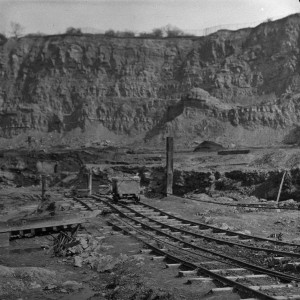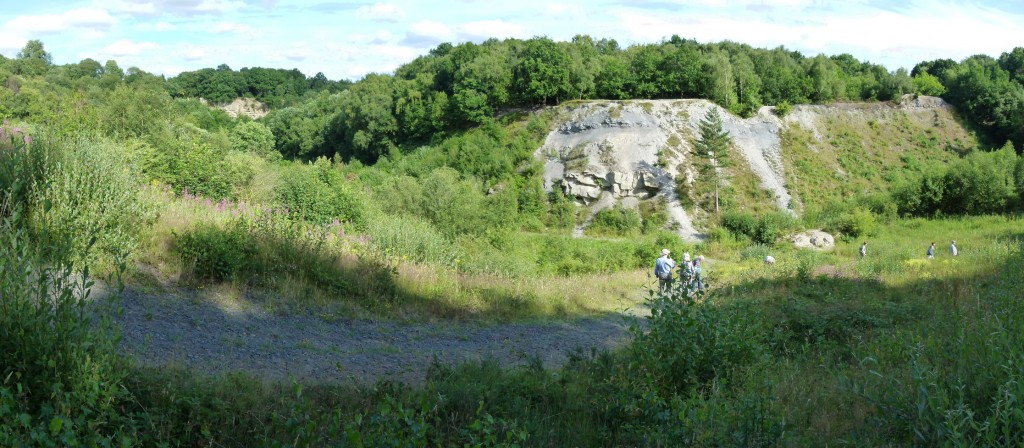Saltwells National Nature Reserve

Doulton’s Claypit, Saltwells,
courtesy of The Lapworth Museum.
Doulton’s Claypit, part of Saltwells National Nature Reserve, is an important site for many reasons. Not only is it a three time geological SSSI, but it also holds a variety of habitats that provide a home to a variety of special wetland animal and plant species.
The site is a result of fireclay extraction by Royal Doulton, between 1870 and 1940, which has left behind high exposures of sandstone, clay and coal (Heathen Coal), which belong to the Middle and Lower Coal Measures. From the Claypit the fireclay would be carried, by tub, up an incline, known as the Old Tub Line to the Dudley No.2 Canal and Brewin’s cutting. During the Industrial Revolution the Dudley No.2 Canal formed part of a network that connected the Heart of the Earl of Dudley’s Estate with the Potteries and the rest of the Midlands.
The bottom of Doulton’s Claypit contains a marsh that provides a home to a variety of marsh loving plants including rare orchid species, dragonfly and butterfly.

Doulton’s Claypit, Saltwells National Nature Reserve. Photo by John Schroder.
Black Country Geopark
Saltwells National Nature Reserve is one of the Black Country Geopark’s Geosites.
Find your way
Hover over a star to see a label.
